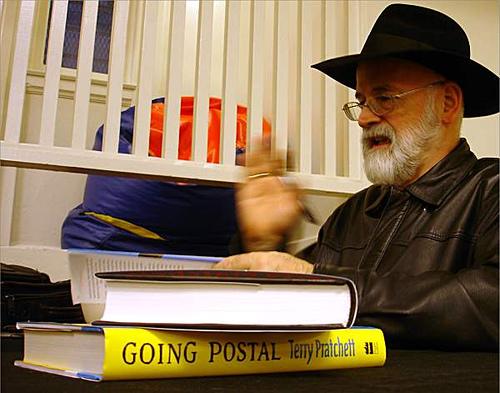Alex Schadenberg, Chair of the International Euthanasia Prevention Coalition, has today published a full analysis of the Lancet review of euthanasia deaths in the Netherlands. This is reproduced in full below.
The long awaited 2010 nationwide examination of the euthanasia law in the Netherlands was published in the Lancet on 11 July, 2012. The study found that:
* the number of euthanasia deaths has grown significantly since 2005 (4050 in 2010, 2425 in 2005),
* the under-reporting of euthanasia in the Netherlands has grown since 2005 (23% in 2010, 20% in 2005),
* there is a growth in deaths by terminal sedation (12.3% in 2010, 8.2% in 2005),
* the percentage of requests for euthanasia being fulfilled has increased (45% in 2010, 37% in 2005).
* the number of deaths without request or consent has decreased (300 in 2010, 550 in 2005).
The media decided to ignore the significant growth in the number of euthanasia deaths since 2005, by reporting that the current percentage of euthanasia deaths in the Netherlands is similar to the percentage of euthanasia deaths in 2001, before it was officially legalized.
Historical facts
Euthanasia in the Netherlands was first legalized through court decisions in the Netherlands. In 1984, the Supreme Court in the Netherlands established a set-of-criteria that should be followed for a physician to cause the death of a person by euthanasia without fear of prosecution.
From 1984 to 2002 a series of legal decisions led to a widening application of euthanasia. The courts allowed euthanasia for people living chronic depression (mental pain), to children who were born with disabilities, and other vulnerable groups.
In 2001, the Netherlands parliament official legalized euthanasia along the guidelines that were approved by the successive court decisions. The law officially came into effect in April 2002. Therefore euthanasia and assisted suicide were common before being legalized in the Netherlands.
Significant growth in Euthanasia
In 2003, the first full-year of legal euthanasia in the Netherlands, there were 1,815 reported cases of euthanasia in the Netherlands. In 2010, there were 3,136 reported cases of euthanasia. There is an approximate (20 - 23%) rate of under-reporting, nonetheless, based on the reported number of euthanasia deaths there has been a 73% increase in euthanasia deaths since 2003.
The rate of increase of reported euthanasia deaths has accelerated over the past few years with a 19% increase in 2010 and a 13% increase in 2009.
The continued increase in the number of euthanasia deaths may be partly explained by the increase in the number euthanasia deaths that are carried out after request. In 2005 37% of requests for euthanasia were fulfilled while in 2010 45% of requests were fulfilled.
There has also been a 50% increase in the number of deaths by terminal sedation since 2005. Terminal sedation is usually done by sedating a person and withdrawing fluids and food. Palliative sedation is different than terminal sedation because with palliative sedation the intention is to allow natural death to occur. Terminal Sedation is viewed by some people as an alternative to euthanasia. When a person is not otherwise dying, the act of terminal sedation is more accurately a form of euthanasia and should be referred to as "slow euthanasia."
The media reports
The medical daily reported that: Rates of Euthanasia are steady since 2002 legalization, Fox news reported: Little change in Dutch euthanasia post-legality, and ABC.net.au reported:Euthanasia number remain the same after legalization - study.
Clearly, the media bought into a common position based on the press release from the Lancet, rather than reading the study to uncover significant concerns.
A thorough response was written by Dr. Peter Saunders, Campaign Director for the Care Not Killing Alliance in the UK. Saunders article focused on the incredible shift towards the use of Deep Continuous Sedation (Terminal Sedation) in order to keep the number of euthanasia deaths officially low.
Euthanasia in the Netherlands
The rate of euthanasia in the Netherlands has increased by 73% in the last 8 years (1,815 reported deaths in 2003, 3,136 reported deaths in 2010) and even more important, the rate of euthanasia has increased by almost 35% in the past two years (2,331 reported deaths in 2008, 3,136 reported deaths in 2010).
Combined with the growth in the use of terminal sedation for people who are not otherwise dying "slow euthanasia" and the slight increase in the number of unreported euthanasia deaths, one must conclude that there are abuses occurring in the Netherlands.
On 1 March, a euthanasia clinic in the Netherlands launched six mobile euthanasia teams in the Netherlands. The NVVE, euthanasia lobby in the Netherlands, announced that they anticipate that the mobile euthanasia teams would complete 1000 euthanasia deaths per year.
The mobile euthanasia teams plan to fill unmet demand for euthanasia for people with chronic depression (mental pain), people with disabilities, people with dementia/Alzheimer, loneliness, and those whose request for euthanasia is declined by their physician. In 2010 45% of all euthanasia requests resulted in death by euthanasia.
Similar to the previous euthanasia reports (1990, 1995, 2001, 2005) the 2010 report uncovers significant concerns related to the practice of euthanasia in the Netherlands.
Legalizing euthanasia and assisted suicide is not safe and the safeguards that are devised to control euthanasia do not protect the dying, but rather they protect the doctor.






.jpg)


"Loneliness
Under the Euthanasia Act, a request for euthanasia may be honoured only if a patient is undergoing unbearable and lasting suffering. The KNMG now says that, if non-medical factors such as income or loneliness are to be taken into consideration, other specialists must be consulted when a patient has requested euthanasia. In an interview broadcast on Dutch television, KNMG chair Arie Nieuwenhuijzen Kruseman said weighing up non-medical factors was far from simple:
"It's quite possible that the same constellation of factors would be experienced as unbearable and lasting suffering by one patient but quite tolerable by another. This makes it extremely difficult."
The physicians association says further investigation into non-medical factors is needed and Dr Nieuwenhuijzen Kruseman adds that euthanasia should be allowed even when a patient is not suffering from a terminal disease:
"It doesn't always have to be a physical ailment, it could be the onset of dementia or chronic psychological problems, it's still unbearable and lasting suffering. It doesn't always have to be a terminal disease."
http://www.nvve.nl/nvve-english/pagina.asp?pagkey=148156&metkey=449